
BMW M3 Saloon / Coupé / Convertible (1992-1999) (E36)
In 1990, the four-door sedan marks the launch of the third generation. The car boasts a high level of elegance and innovative technology. It has also become significantly larger and more spacious. The two-door version follows in 1992, but this time as an extremely elegant coupé. Just a few months later, BMW adds two further highlights – the new convertible and the new BMW M3. With the BMW 3 Series Compact of 1994, BMW designers succeed in realising yet another conceptual innovation. It appeals predominantly to fans that attach importance to economy, without wishing to forego dynamics and comfort. The tailgate of the 4.21-metre long BMW is a particularly practical feature.
The new six-cylinder models are equipped with two camshafts and four valves per combustion chamber. The power units in the coupé version feature for the first time VANOS variable camshaft control, a new technology that enhances the torque curve, lowers fuel consumption and emission levels and allows engineers to increase compression. Two further newcomers are the 325tds featuring a six-cylinder diesel engine including turbocharger and intercooler as well as the first four-cylinder turbo diesel under the bonnet of the 318tds. At the turn of the year 1994/95, BMW also adds a lightweight aluminium crankcase to the six-cylinder engines.

BMW M3 saloon, 286 bhp
From October 1994, the BMW M3 was also supplied as a saloon. It combined the attractive line of the 3 Series saloon with the 4-valve 6-cylinder engine newly developed by BMW Motorsport GmbH. It was fitted with the world’s first fully variable valve timing (VANOS) and generated 286 hp. Only 1,303 units of the M3 saloon were sold up to the facelift of the BMW M3 and this has made it a much sought-after collector’s item today.
General Data
Model Year……………………………1994 – 1995
No. of Units…………………………..1,303
Price
Technical Data
Type of Engine……………………….Six-cylinder in-line engine
capacity in ccm………………………2990
Power Output…………………………210 kW/286 bhp at 7000 rpm
Max.Speed…………………………….250 km/h (155mph)
Dimensions……………………………4433x1698x1365
Empty Weight (kg)…………………..1535
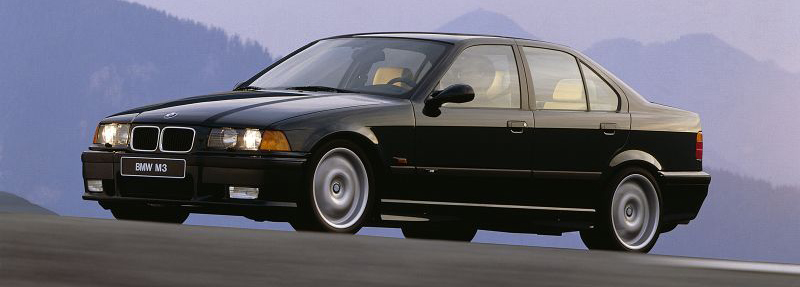
BMW M3 saloon, 321 bhp
M GmbH gave the BMW M3 an extensive revision with numerous improved details for the model year 1996. The 6-cylinder engine was enlarged to create a displacement of 3.2 litres and now generated 321 hp. It provided a unique level of efficiency in this performance class with advanced fully variable valve timing developed to create Double VANOS. By 1998, customers could also select an M3 as a four-door saloon. Nearly 3,000 units of this high-performance saloon generating 321 hp were supplied to the European market.
General Data
Model Year……………………………1995 – 1998
No. of Units…………………………..2,690
Price……………………………………DM 88,500
Technical Data
Type of Engine……………………….Six-cylinder in-line engine
capacity in ccm………………………3201
Power Output…………………………236 kW/321 bhp at 7400 rpm
Max.Speed…………………………….250 km/h (155 mph)
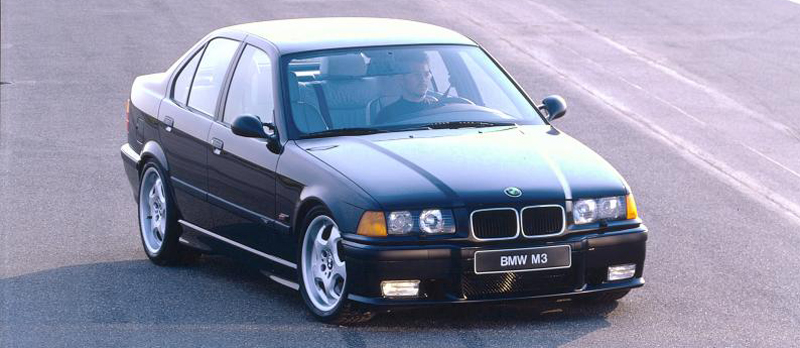
BMW M3 saloon, US version
The new BMW M3 based on the third 3 Series generation (E36) celebrated its debut on the North American market in 1994. The US version developed especially for North America generated 240 hp and initially developed its power from displacement of 3.0 litres. The displacement was increased to 3.2 litres in the course of the model revision in 1996 while the output remained the same. Between 1996 and 1998, the US version was also successfully marketed as a saloon with nearly 9,000 units produced.
General Data
Model Year……………………………1996 – 1998
No. of Units……………………………8,610
Price
Technical Data
Type of Engine……………………….Six-cylinder in-line engine
capacity in ccm………………………3201
Power Output…………………………176 kW/240 bhp at 6000 rpm
Max.Speed…………………………….219 km/h
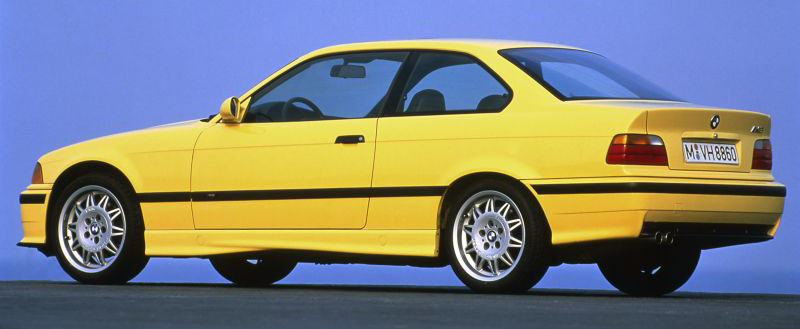
BMW M3 Coupé, 286 bhp
The new BMW M3 based on the third 3 Series generation (E36) celebrated its debut in 1992. The high-performance coupé with simple styling from BMW Motorsport GmbH was powered by a newly developed 3.0 litre 6-cylinder engine with the world’s first variable valve timing (VANOS) and a robust 286 hp. This enabled the new M3 to offer performances of a thoroughbred sports car, combined with full everyday utility and at a very favourable price compared with the competition. This first version had already sold more than 15,000 units by the summer of 1995.
General Data
Model Year……………………………1992 – 1995
No. of Units…………………………..15,550
Price……………………………………DM 80,000
Technical Data
Type of Engine……………………….Six-cylinder in-line engine
capacity in ccm………………………2990
Power Output…………………………210 kW/286 bhp at 7000 rpm
Max.Speed…………………………….250 km/h (155mph)
Dimensions……………………………4433x1710x1335
Empty Weight (kg)…………………..1535

BMW M3 coupé, 321 bhp
Since 1992, BMW has sold the successful M3 based on the third 3 Series generation (E36). M GmbH gave the M3 an extensive revision with numerous improved details for the model year 1996. The engine was enlarged to create a displacement of 3.2 litres and now generated 321 hp. It provided a unique level of efficiency in this performance class with advanced fully variable valve timing developed to create Double VANOS. The revised chassis and the new compound braking system completed the facelift and transformed the M3 into a balanced and versatile sports car with no competition.
General Data
Model Year……………………………1995 – 1998
No. of Units…………………………..8,962
Price……………………………………DM 88,500
Technical Data
Type of Engine……………………….Six-cylinder in-line engine
capacity in ccm………………………3201
Power Output…………………………236 kW/321 bhp at 7400 rpm
Max.Speed…………………………….250 km/h (155mph)
Dimensions…………………………….4433x1710x1335
Empty Weight (kg)…………………..1515
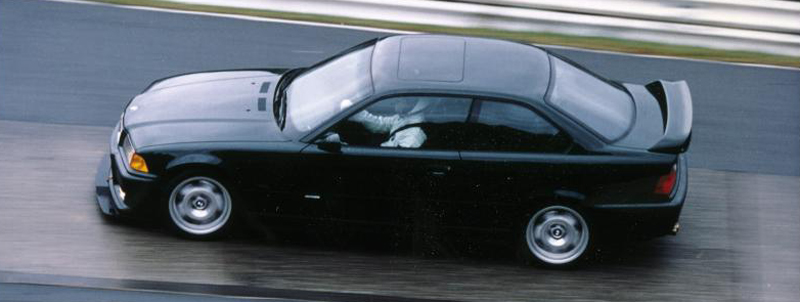
BMW M3 GT coupé
In 1995, BMW M GmbH launched a strictly limited version of the BMW M3 for homologation as a racing car, the M3 GT. The BMW M3 was already extremely powerful but the BMW M3 GT packed even more power. Double-VANOS and six individual throttle valves combined with a braking system designed for racing circuits to give the M3 GT incredible performance for a road vehicle. Only 356 cars of this limited edition were produced.
General Data
Model Year……………………………1995 – 1995
No. of Units…………………………..356
Price……………………………………DM 91,000
Technical Data
Type of Engine……………………….Six-cylinder in-line engine
capacity in ccm………………………2990
Power Output…………………………217 kW/295 bhp at 7000 rpm
Max.Speed…………………………….250 km/h (155mph)
Dimensions……………………………4433x1710x1335
Empty Weight (kg)…………………..1460
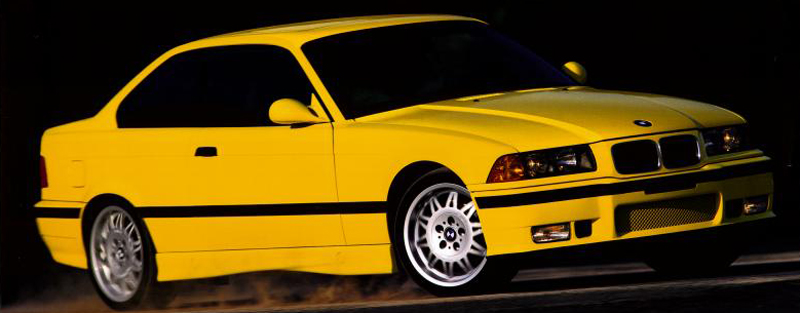
BMW M3 coupé, US version
The new BMW M3 based on the third 3 Series generation (E36) celebrated its debut on the North American market in 1994. The US version developed especially for North America generated 240 hp and initially developed its power from displacement of 3.0 litres. The displacement was increased to 3.2 litres in the course of the model revision in 1996 while the output remained the same. The US version of the BMW M3 was exceptionally successful. North America advanced to become the largest single market generating the strongest sales for the M3 coupé with a total of 22,000 units produced.
General Data
Model Year……………………………1994 – 1999
No. of Units…………………………..22,013
Price
Technical Data
Type of Engine……………………….Six-cylinder in-line engine
capacity in ccm………………………2990 (ab 1996: 3201)
Power Output…………………………176 kW/240bhp at 6000 rpm
Max.Speed…………………………….219 km/h
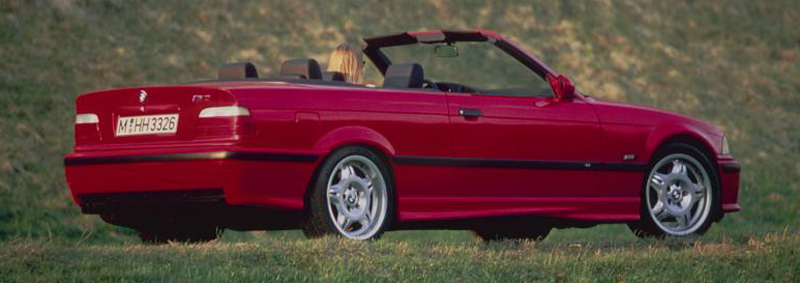
BMW M3 convertible, 286 bhp
The new BMW M3 based on the third 3 Series generation (E36) celebrated its debut in 1992. The first version of the new M3 already celebrated its premiere in spring 1994 with the M3 convertible. Optimum dynamic power was supplied by the 3.0 litre 6-cylinder engine newly developed by BMW M GmbH, fitted with the world’s first fully variable valve timing (VANOS) and robust power of 286 hp. Like the M3 saloon launched in autumn of 1994, the M3 convertible was also the preserve of passionate aficionados and is therefore a coveted collector’s car today.
General Data
Model Year……………………………1994 – 1995
No. of Units…………………………..1,975
Price……………………………………DM 91,300
Technical Data
Type of Engine……………………….Six-cylinder in-line engine
capacity in ccm………………………2990
Power Output…………………………210 kW/286 bhp at 7000 rpm
Max.Speed ……………………………250 km/h (155mph)
Dimensions……………………………4433x1710x1340
Empty Weight (kg)…………………..1615
BMW M3 convertible, 321 bhp
M GmbH gave the BMW M3 an extensive revision with numerous improved details for the model year 1996. The 6-cylinder engine was enlarged to create a displacement of 3.2 litres and now generated 321 hp. It provided a unique level of efficiency in this performance class with advanced fully variable valve timing developed to create Double VANOS. The M3 convertible also benefitted from the innovations and now had an even more sporty and dynamic profile. The convertible remained in production until September 1999 and this made it the version of the BMW M3 E36 with the longest production run.
General Data
Model Year……………………………1996 – 1999
No. of Units…………………………..3,870
Price……………………………………DM 97,500
Technical Data
Type of Engine……………………….Six-cylinder in-line engine
capacity in ccm………………………3201
Power Output…………………………236 kW/321 bhp at 7400 rpm
Max.Speed…………………………… 250 km/h (155mph)
Dimensions……………………………4433x1710x1340
Empty Weight (kg)…………………..1635

BMW M3 convertible, US version
The new BMW M3 based on the third 3 Series generation (E36) celebrated its debut on the North American market in 1994. The US version developed especially for North America generated 240 hp and initially developed its power from displacement of 3.0 litres. The displacement was increased to 3.2 litres in the course of the model revision in 1996 while the output remained the same. Although the M3 convertible was only supplied to North America around the end of the production run, it enjoyed extremely successful sales. BMW M GmbH sold nearly 7,000 convertibles between 1998 and 1999.
General Data
Model Year……………………………1998 – 1999
No. of Units…………………………..6,269
Price
Technical Data
Type of Engine……………………….Six-cylinder in-line engine
capacity in ccm………………………3201
Power Output…………………………176 kW/240 bhp at 6000 rpm
Max.Speed…………………………….219 km/h
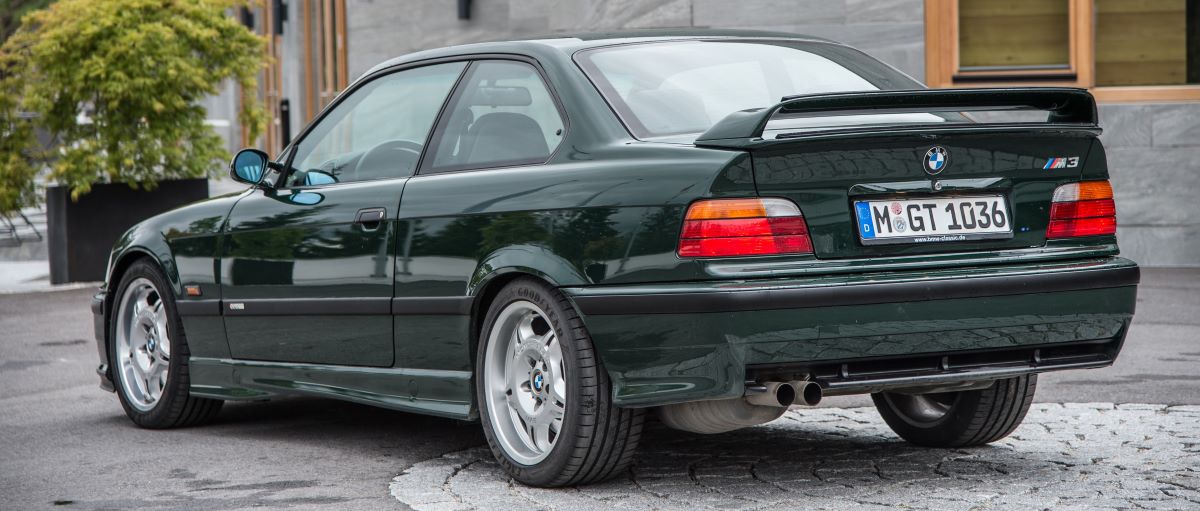
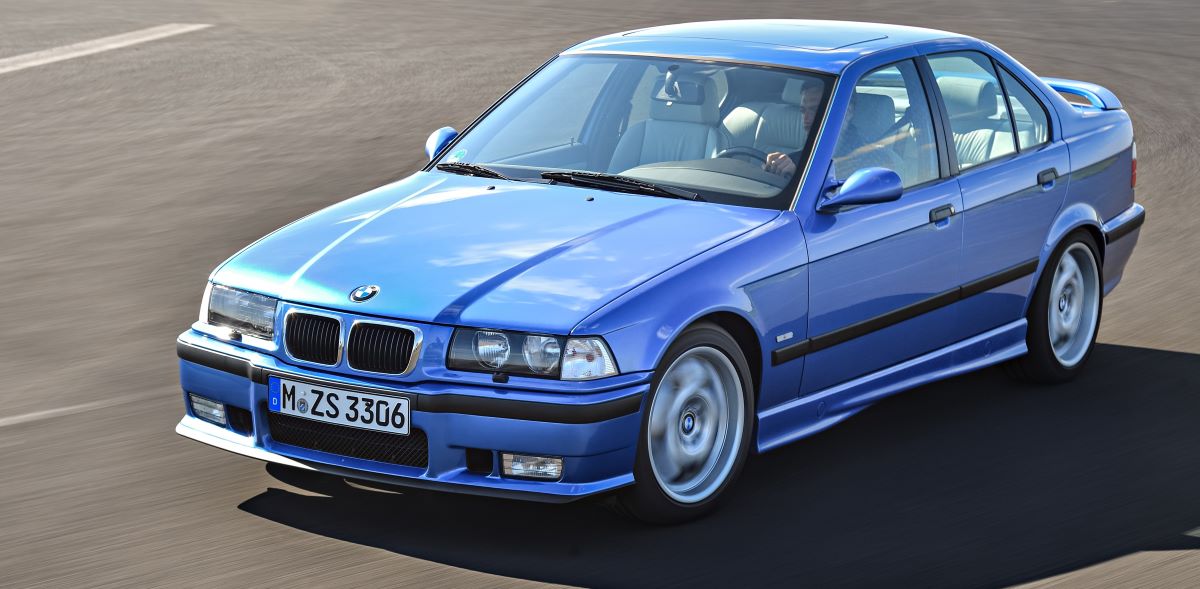
BMW M Achieves Wide Appeal: Unique E36 M3 Models for the U.S.
The American automobile market loves high performance, and it also loves low prices. That paradox presents a challenge for any automaker, but it’s not insurmountable. All it takes is a willingness to adapt, and some creative engineering, as evidenced by the E36 M3 that arrived on these shores in 1995.
BMW M began developing the E36 M3 in 1989, two years before the launch of the series-production E36 3 Series coupe that would form the basis for this high-performance variant. The first-generation E30 M3 was still in production, and still winning races, but BMW M wanted to evolve the model from a pure homologation special into a high-performance road car that could nonetheless compete successfully in the Deutsche Tourenwagen Meisterschaft, or DTM.
Naturally, the requirements of racing were taken into consideration during the E36 M3’s development, and the new car’s S50 six-cylinder engine was a technological masterpiece. Designed under the engineering leadership of Paul Rosche, the engine used a two-piece head with four valves per cylinder, shim-under-bucket valve adjustment, step-free VANOS variable timing on the intake camshaft, and six individual throttle bodies. Displacing 2,990cc, and with a compression ratio of 10.8:1, the S50B30 delivered 286 horsepower at 7,000 rpm and 236 pound-feet of torque at 3,600 rpm, enough to propel the car from zero to 100 km/h (62 mph) in 6.0 seconds. The rest of the car was similarly sophisticated, with stylish aero enhancements by Ulf Wiedhase and Christine Angermann and 17-inch M Double Spoke alloy wheels by Marcus Syring.
Thanks in large part to its exotic engine, the E36 M3 was set to be significantly more expensive than the outgoing E30 M3, which had sold for DM 59,800 when it launched in Europe in 1986. In its second generation, the M3 was expected to cost another DM 20,000, about $11,000 more at the highly variable exchange rate of the late 1980s. For the U.S. market, where BMW NA had struggled to sell the $35,000 E30 M3 in the latter stages of its production run, the new M3 was deemed too expensive.

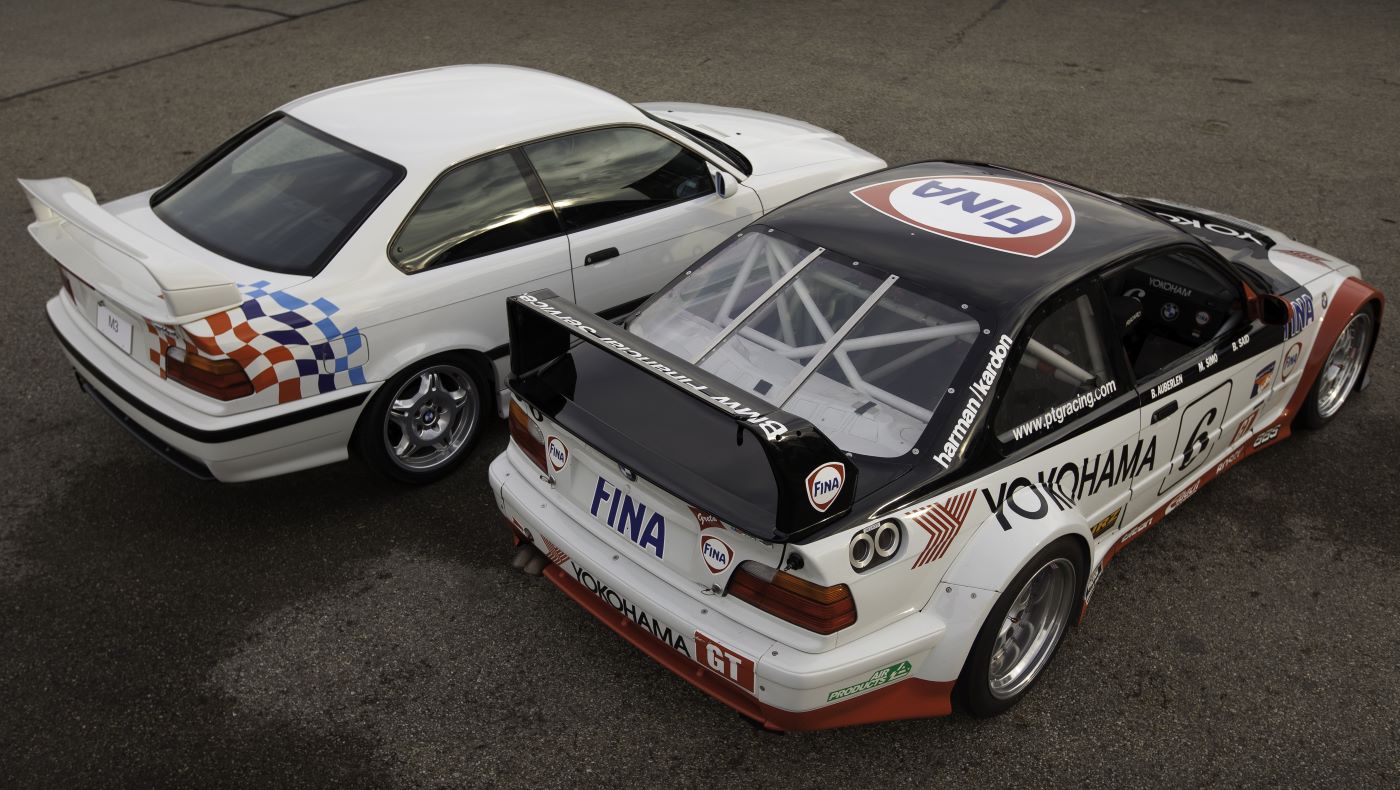
“I had to be the Lone Ranger in the desert, pointing out to everyone the pricing problems we had with our brand in the U.S.,” said Carl Flesher, then BMW of North America’s VP of Marketing under president Karl Gerlinger. “That, as nice as that car would be, it would be too much money, and no one would see the value and we would have trouble selling it. I said there was no reason in the world to bring a car like that in and then find ourselves having to discount it.”
At that point, none of the M3’s details had been released for public consumption, and it was considered highly confidential within BMW even when the M3’s details were released internally in late April 1992, in a confidential “Pre-Information” document. In June, an even more detailed document was distributed to product planning departments for their assessment, but again this information was not yet made public.
That said, good journalists always cultivate confidential sources, and the BMW Car Club of America had a very good journalist in Bob Roemer. Roemer had spent time in Germany with the U.S. Army, and he’d made friends with a number of BMW insiders. That included Karlheinz Kalbfell, then head of BMW M. (Both men had served as tank commanders, which undoubtedly created a bond that went well beyond their mutual enthusiasm for BMW.) In early January 1992, Roemer spoke with Kalbfell at the Detroit Auto Show, and he reported in Roundel magazine’s March 1992 issue that BMW was “considering not bringing the new M3 to North America and letting the entire M-car concept die here when the current [E34] M5 is replaced.” (M cars had struggled in this market throughout the 1980s, saddled with high prices and oversupplied relative to demand. BMW NA had sold just 1,678 examples of the E34 M5 from December 1989 through April 1993 and had struggled to move the last thousand or so of the 5,300 E30 M3s imported from March 1987 through December 1990.)
At Kalbfell’s request, or at least with his consent, Roemer asked Roundel readers to submit their thoughts on the matter, and he published excerpts from their letters in the magazine’s July 1992 issue. In closing that article, Roemer mentioned that he had presented the letters to Karl Gerlinger, then president of BMW NA, “so that he and his staff could have the full impact of your communications.”
Those communications were thoughtful, and highly detailed. CCA members deemed M cars essential to BMW’s identity as a high-performance marque, but felt the M cars hadn’t been advertised sufficiently. As for what they wanted in an M3, readers specified six-second 0-to-60 acceleration, great handling and brakes, and decent amenities, including leather upholstery on sport seats, air conditioning, and a radio. For that, they’d be willing to pay $35,000, and they thought most of their fellow club members would do the same.
In September 1992, the E36 M3 made its world premiere at the Paris Auto Salon, creating plenty of buzz among enthusiasts worldwide. The car went on sale that month, with its German-market price starting at DM 80,000, or $51,000 at the 1992 exchange rate.
That was far more than U.S. enthusiasts had said they’d be willing to pay, which caused BMW NA executives—led by Gerlinger as president, joined since April 1992 by Victor Doolan, who’d replaced Flesher as VP of Marketing and with additional responsibility for sales—to formally reject the car for the U.S. market following Kalbfell’s M Product Strategy presentation in Woodcliff Lake on December 10-12, 1992.
BMW Canada, on the other hand, agreed to take the car. In February 1993, BMW Canada’s head of Product Planning, Tom Plucinsky (later head of Product Communications for BMW NA) calculated an initial market capacity of 50 E36 M3s, followed by 75 in the second year and a final 30 cars in year three. He requested a show car for the Canadian International Autoshow in Toronto later that month, which generated a brief article by Canadian journalist Jeremy Sinek in Autoweek on March 1, 1993. Sinek’s article created considerable consternation among U.S. enthusiasts who’d just found out they’d be denied the M3 their Canadian counterparts would enjoy. It also generated consternation within BMW of North America, which was outraged at the negative publicity surrounding the decision. NA quickly hit reverse, and at the end of March 1993 the company formally agreed with BMW M’s suggestion to explore an alternate powertrain that would allow the E36 M3 to be sold affordably in the U.S.
Things moved quickly after that. Kalbfell and Rosche had been developing a version of the series-production M50 six-cylinder engine for South Africa, where BMW had offered several parts-bin hot rods, and where Doolan had worked prior to taking positions at BMW Canada and North America. One of those SA specials was the 332, an E30 3 Series powered by the M30 “big six” that had been in production since 1968 and was soon to be retired. A new engine would be needed if South Africa were to offer a similar car on the E36 platform, hence the development of a hotter M50.
When the modified M50 was up and running, Kalbfell and Rosche demonstrated it to Doolan in Munich. “They drove me to a restaurant in a 5 Series with an M-modified motor they thought could work in an M3 for us,” Doolan said. “Who was I to disagree?” Automobile magazine put a Dakar Yellow M3 on the cover of its May 1993 issue, above a headline that read “New BMW M3: 286 hp, 155 mph—and it’s coming to America!” The horsepower figure and top speed reflected the specs of the European car, but the M3 was indeed coming to America.
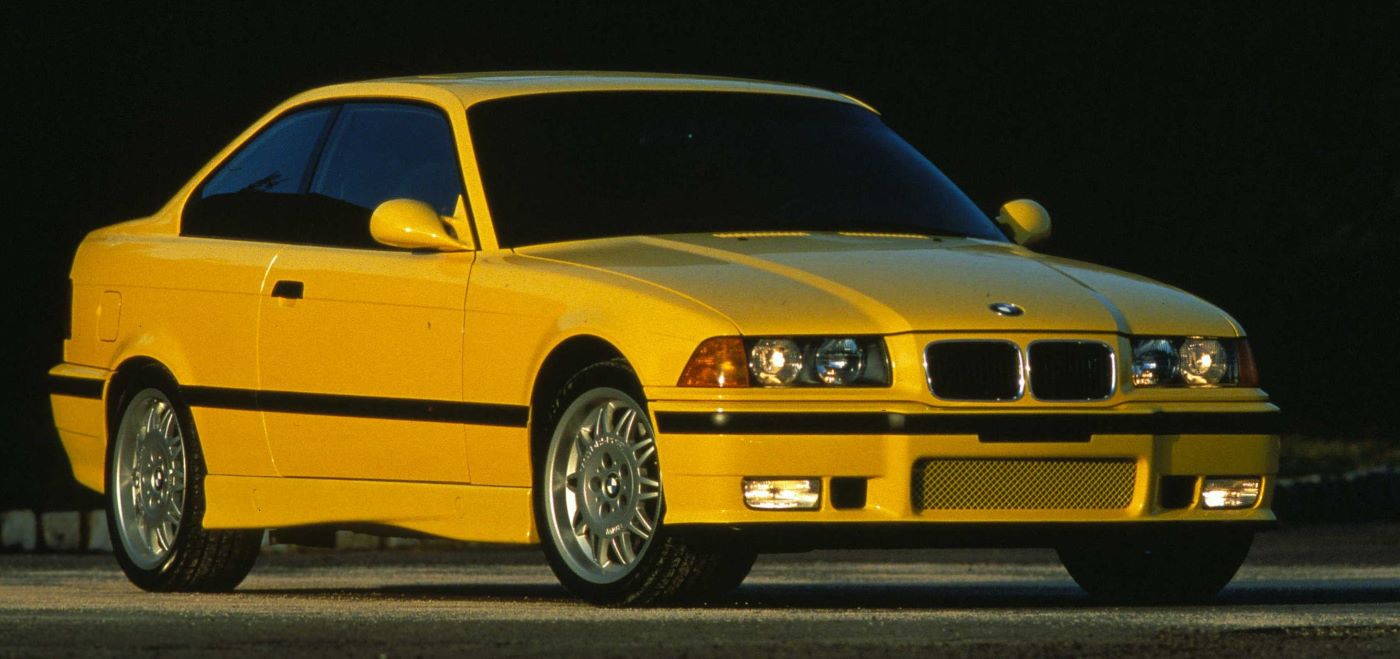
To keep the car’s price within reach of American wallets, the modified M50 would be far simpler and less expensive than the S50. It had a one-piece cylinder head, self-adjusting valve tappets, and a single throttle body instead of six. With a slightly lower compression ratio of 10.5:1, the engine would be less sensitive to octane levels in fuel, a crucial consideration in the U.S. The engine delivered 240 hp at 6,000 rpm and 225 pound-feet at 4,250 rpm—enough to satisfy enthusiasts’ demands for robust 0–to-60 mph acceleration, but not enough to place the car in the most expensive insurance category, which the Euro M3 occupied in Germany. Most importantly, the lower-spec engine would reduce the car’s retail price to $35,800, almost exactly what enthusiasts had said they’d be willing to pay.
“The Germans thought it was heresy to dumb-down a new M product for the U.S., but the difference was 0.2 second from 0 to 60,” said Erik Wensberg, then BMW of North America’s Motorsport Manager.
Because the engine wasn’t considered a “real” M engine within the M division, BMW of North America was encouraged to identify the car as an M330i rather than an M3. BMW NA won that battle, and by August 1993 the U.S.-spec E36 M3 had been defined. On September 8, the launch date was set for November 1, when a select group of U.S. journalists including Bob Roemer would drive prototypes of the car at the Nürburgring.
In March 1994, series production of the U.S.-spec M3 coupe began, and the car was an immediate hit upon its arrival in the U.S. Other than the engine, now designated as S50B30US, the U.S.-spec E36 M3 was nearly identical to its European counterpart, albeit with solid rather than floating front brake rotors, an instrument cluster whose speedometer read in miles per hour rather than kilometers, a tach that indicated a graduated redline, and a fuel economy meter in place of the oil temperature gauge. For the U.S., air conditioning and an Alpine sound system were standard, with the customer’s choice of M cloth/Amaretta suede or Nappa leather upholstery as no-cost options. To accommodate the rougher roads in this country, the M3’s suspension would use slightly softer spring and damper rates than its European counterpart.
By the end of 1995, BMW of North America had sold 8,515 examples, a number that compared favorably with the 11,284 European-spec cars produced from September 1992 through July 1995. Sales were so strong, in fact, that BMW of North America convinced M to offer the M3 with an optional five-speed automatic transmission. From December 1994 to January 1996, BMW NA imported 1,705 automatic M3s. In Canada, meanwhile, the 45 enthusiasts who had pre-ordered their cars took delivery of the Euro-spec M3 in early 1994. After a hiatus year for Model Year 1995, the U.S.-spec E36 M3 would be offered to Canadian customers from Model Year 1996.
Those totals were only the beginning. The M3 came in for major revisions in 1996, getting a larger-displacement, more powerful engine worldwide. In the U.S., the S50B30US was replaced by the S52B32US; based on the new M52 six, this engine displaced 3,201cc and delivered the same 240 horsepower and slightly more torque: 236 pound-feet instead of 225.
Along with the new engine, the 1996 M3 was available in the U.S. as a four-door sedan, that was exclusive to this market, and which proved tremendously popular. It was followed by a U.S.-only convertible in 1998. In the U.S., all three body styles would be available with a five-speed manual or automatic transmission, though U.S. enthusiasts were denied the new six-speed manual and the Sequential Manual Gearbox offered in Europe. Even so, BMW NA sold an additional 27,084 M3s before production ended in August 1999, bringing the total to 35,843 cars. That was an astonishing figure, and it represented fully one-third of all M3s produced. The success of the M3 turned the U.S. from a marginal M-car market to the world’s largest and most important by 1995—an accolade it holds to this day. “We showed that at the right price point, the M3 could be wildly successful in the U.S.,” Brekus said.
“Regardless of your position on the purity of the U.S. M3, there is no doubt that the reputation and volume of the U.S. E36 M3 did wonders to establish BMW M in North America, while providing BMW M with the cash reserves needed to develop the incredible E46 M3 that followed,” Plucinsky said.
The E36 M3 itself had met enthusiast demands, and its performance credentials were solidified by a racing program organized by Wensberg as Motorsport Manager—and M Brand Manager, starting in the fall of 1994. Following a development year in 1995, the M3s campaigned for BMW NA by Prototype Technology Group won the GT driver’s titles for Pete Halsmer and Bill Auberlen in 1996 and ’97, respectively, and the 1998 GT2 title for the team. In recognition of the BMW CCA’s role in bringing the E36 M3 to the U.S., the cars raced with BMW CCA stickers on their front splitters, and they’ve remained on every GT car raced by BMW NA since 1995. “The CCA letter-writing campaign started the whole ball rolling in the U.S.,” Wensberg said. “It’s really the club’s team.”

You must be logged in to post a comment.